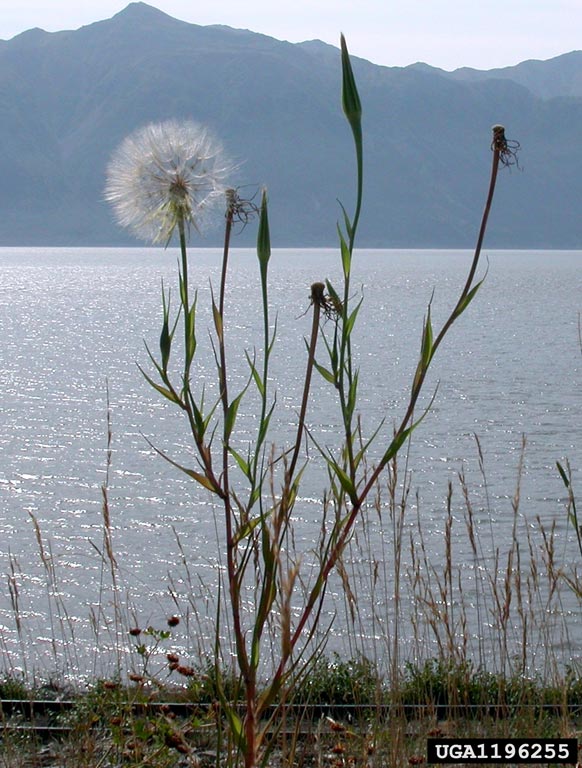Weed of the Month: Western Salsify
 | Author:
Allison Kosto, MSU Broadwater County Extension Agent
MSU Broadwater County Extension Agent |
Weed of the Month: Western Salsify
Allison Kosto
MSU Broadwater County Extension Agent
My kids affectionately call this weed a giant dandelion, and it’s easy to see how they make the connection with its yellow flower and fluffy seedheads. The word salsify means “a plant that follows the sun." Western Salsify opens during the day and always remains pointed at the sun, following it across the sky and closing at night. It also goes by the names yellow salsify and Goatsbeard.
Description & Habitat
Native to Eurasia and northern Africa, Western Salsify was brought to North America around 1900 as a food plant and ornamental. It is now widespread across North America and has been found in every county in Montana. Although not as serious as other weeds, it can be problematic in rangeland and pastures. It can also be found in disturbed areas.
Western Salsify has rubbery, grass-like leaves. It is often mistaken as a grass prior to flowering. The stems and leaves have a milky juice when broken. The stem is hollow. The flower head is yellow and looks similar to a large dandelion. The flowerhead matures into a fluffy sphere, also like a dandelion, about 2 to 4 inches in diameter. Western Salsify has a thick taproot. It is a biennial (life cycle of two years) or short-lived perennial. It only spreads through seed production and will die after seed production which can take 1 to 4 years.
The plant is found in a wide range of climates ranging from grassland to forested areas. It can form dense colonies that displace native and desired vegetation and decrease forage production and plant diversity. It is commonly consumed by wildlife including deer, squirrels, rabbits and pocket gophers. One study found it to be an important food source of blue grouse. The roots of western salsify are edible and can be used similarly to parsnip or carrots.
Management
Very little research has been done on Western Salsify. Typically, 100% control is not necessary. Reducing the population in high-density sites will allow the desired species to come back but still leave a few Western Salsify plants that can benefit wildlife.
The most effective management strategy is to prevent it from going to seed. Small infestations can be hand pulled, hoed or dug. Mowing consistently can be effective. Tilling may be effective if followed by reseeding.
Herbicides are also an option and are most effective before plants flower. The most commonly used chemicals include Banvel, Chaparral, Cimarron, Escort, Tordon (restricted use) and Weedmaster. A surfactant is beneficial due to the rubbery leaves. Always read and follow the entire label when applying herbicide. Common chemical names are used for clarity but does not imply endorsement of a product or brand.
For assistance on weed identification and management, contact the MSU Extension Office in Broadwater County at 406-266-9242.
Article Images
Click on Image Thumbnail(s) to view fullsize image
